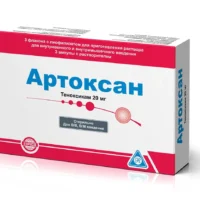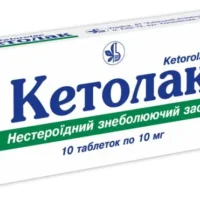Description
Revmalgyn (Meloxicam) Tablets 7.5 mg. №20
Ingredients:
- Each tablet contains 7.5 mg of meloxicam.
Dosage:
- The recommended dosage is one tablet daily.
- Take the tablet with a full glass of water.
Indications:
- Revmalgyn tablets are indicated for the relief of pain and inflammation in conditions such as osteoarthritis and rheumatoid arthritis.
Contraindications:
- Do not use Revmalgyn if you have a history of allergic reactions to meloxicam or other NSAIDs.
- Avoid use in patients with peptic ulcer disease or gastrointestinal bleeding.
Directions:
- Take Revmalgyn exactly as prescribed by your healthcare provider.
- Do not exceed the recommended dosage.
Scientific Evidence:
- Meloxicam, the active ingredient in Revmalgyn, is a nonsteroidal anti-inflammatory drug (NSAID) that works by inhibiting the enzymes responsible for inflammation.
- Studies have shown that meloxicam is effective in reducing pain and inflammation associated with arthritis.
Additional Information:
- Discuss with your doctor any potential side effects or interactions with other medications before starting Revmalgyn.
- Long-term use of NSAIDs like meloxicam may increase the risk of cardiovascular events, so it is essential to use the medication as directed.
- Meloxicam may have a lower risk of gastrointestinal side effects compared to other NSAIDs, making it a favorable choice for patients requiring long-term pain management.





